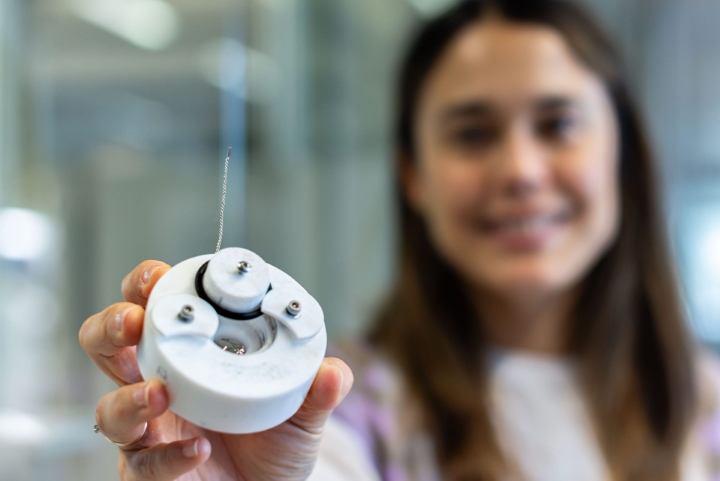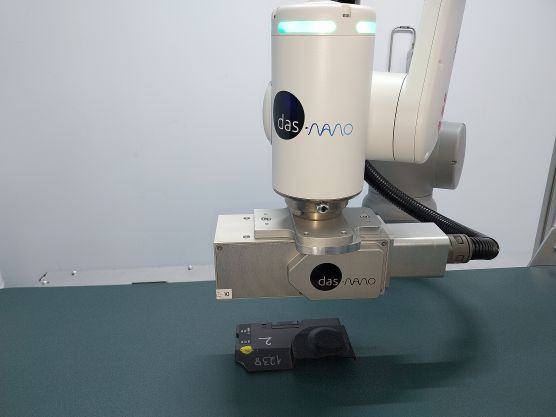CIC energiGUNE will design the first electrically rechargeable zinc-air battery, which will improve the life cycle and storage times of these devices

The work is part of the European Project HIPERZAB funded by the European Research and Innovation Programme (GA nº 101115421), and led by the Basque centre, whose launch meeting took place today at the headquarters of CIC energiGUNE in Vitoria-Gasteiz with the presence of representatives of the 7 entities, both European and non-EU, participating in the consortium.
The objective is to design and validate on a laboratory scale an electrically rechargeable zinc-air battery that allows progress in cyclability and storage time, with the aim of combining it with renewable energies and electrolysers for stationary storage (medium-long term).
 CIC energiGUNE, a leading Basque research centre in electrochemical energy storage, thermal energy storage and conversion and hydrogen technologies, has launched the process to design the first electrically rechargeable zinc-air battery, which will be a decisive step forward in the development of this technology, which stands out for its high durability and the use of abundant and inexpensive active materials. The initiative is part of the European HIPERZAB project, which involves seven companies and organisations from the continent led by CIC energiGUNE and whose launch meeting took place today in Vitoria-Gasteiz.
CIC energiGUNE, a leading Basque research centre in electrochemical energy storage, thermal energy storage and conversion and hydrogen technologies, has launched the process to design the first electrically rechargeable zinc-air battery, which will be a decisive step forward in the development of this technology, which stands out for its high durability and the use of abundant and inexpensive active materials. The initiative is part of the European HIPERZAB project, which involves seven companies and organisations from the continent led by CIC energiGUNE and whose launch meeting took place today in Vitoria-Gasteiz.
“Currently we have primary zinc-air batteries, which are not rechargeable and last a long time, although they have limited rechargeability,” said Nagore Ortiz Vitoriano, Principal Researcher at CIC energiGUNE in this project. “What we are going to achieve with HIPERZAB is to create, for the first time, a rechargeable zinc-air battery and, in this way, advance in the development of a type of device ideal for medium-term storage – days or weeks -, capable of being combined with renewable energies and electrifiers”, she said.
HIPERZAB’s proposal, which has been included in the European Union’s Pathfinder Challenges call, has a highly disruptive component, as although primary zinc-air batteries exist on the market, a rechargeable version of these has not yet been developed. Achieving this objective would mean immediate improvements in storage time, cost reduction and life-cycle design adapted to medium-term storage, as well as allowing the combination with renewable energies and electrolysers.
It should be noted that metal-air batteries, as in this case, have significant advantages, such as the use of cheap and abundant active materials, high energy density, and long-term stability. The major obstacle to their development, which the HIPERZAB project will try to overcome, is their rechargeability (limited to minutes, hours) and the high maintenance costs associated with mechanical (not electrical) recharging.
To achieve this goal, HIPERZAB will develop three innovative components: an anode composed of Zinc/3D porous biopolymer, a sustainable bi-layer gel electrolyte based on natural polymers, and a cathode free of critical materials. The project will also focus on understanding the reaction mechanisms of these materials, correlating operating conditions with electrochemical phenomena thanks to characterisation techniques developed specifically for this technology. CIC energiGUNE, in addition to coordinating the project, will play an active and decisive role in the work packages devoted to research into the cathode, the electrolyte, modelling and integration of the cell.
The HIPERZAB consortium is made up, in addition to CIC energiGUNE as leader, of Cegasa Energía, Sintef, Poltecnico di Torino, Institut de Recerca de l’energia de Catalunya, Advenst and Deutsches Zentrum Fur Luft Und Raumfahrt. The execution period is 48 months.




